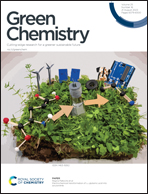Shining light on layered metal phosphosulphide catalysts for efficient water electrolysis: preparation, promotion strategies, and perspectives
Abstract
Electrocatalytic water splitting can efficiently produce clean hydrogen energy, which could alleviate the global energy crisis and reduce environmental pollution. Highly active and earth-abundant electrocatalysts are crucial for the sustainable development of a future hydrogen economy. Layered metal phosphosulphides (MPS3, M = Fe, Co, Ni, Pd, Mn) are novel two-dimensional (2D) materials that have attracted tremendous interest in the catalytic community. However, the low intrinsic activity of bulk MPS3 seriously hinders its wide application as an efficient electrocatalyst for the hydrogen/oxygen evolution reaction (HER/OER) and overall water splitting (OWS). For better practical catalytic implementation of MPS3, a range of performance promotion strategies have been successfully proposed, including few-layer exfoliation, elemental doping, and heterojunction construction, among others. In this review, we have summarized and discussed the design, preparation and promotion strategies of MPS3-based electrocatalysts for water splitting. In addition, the future perspectives, opportunities, and challenges for MPS3-based electrocatalysts are also briefly discussed. This review should provide effective guidance for the design and development of advanced electrocatalysts for hydrogen production.

- This article is part of the themed collection: 2023 Green Chemistry Reviews


 Please wait while we load your content...
Please wait while we load your content...